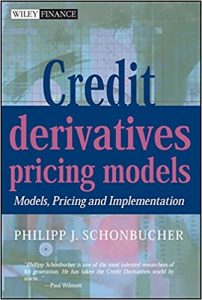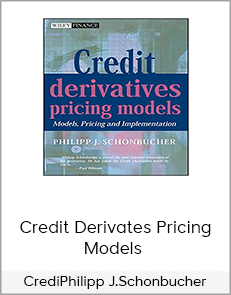Credit Derivates Pricing Models – Philipp J.Schonbucher
$25.00
However, most countries float their currencies freely against those of other countries, which keeps them in constant fluctuation.
Credit Derivates Pricing Models – Philipp J.Schonbucher

Check it out: Credit Derivates Pricing Models – Philipp J.Schonbucher
You want to learn about Forex?
Foreign exchange, or forex, is the conversion of one country’s currency into another.
In a free economy, a country’s currency is valued according to the laws of supply and demand.
In other words, a currency’s value can be pegged to another country’s currency, such as the U.S. dollar, or even to a basket of currencies.
A country’s currency value may also be set by the country’s government.
However, most countries float their currencies freely against those of other countries, which keeps them in constant fluctuation.
Description
The credit derivatives market is booming and, for the first time, expanding into the banking sector which previously has had very little exposure to quantitative modeling. This phenomenon has forced a large number of professionals to confront this issue for the first time. Credit Derivatives Pricing Models provides an extremely comprehensive overview of the most current areas in credit risk modeling as applied to the pricing of credit derivatives. As one of the first books to uniquely focus on pricing, this title is also an excellent complement to other books on the application of credit derivatives. Based on proven techniques that have been tested time and again, this comprehensive resource provides readers with the knowledge and guidance to effectively use credit derivatives pricing models. Filled with relevant examples that are applied to real-world pricing problems, Credit Derivatives Pricing Models paves a clear path for a better understanding of this complex issue.
Dr. Philipp J. Schönbucher is a professor at the Swiss Federal Institute of Technology (ETH), Zurich, and has degrees in mathematics from Oxford University and a PhD in economics from Bonn University. He has taught various training courses organized by ICM and CIFT, and lectured at risk conferences for practitioners on credit derivatives pricing, credit risk modeling, and implementation.
Table of Contents
Preface.
Acknowledgements.
Abbreviations.
Notation.
Introduction.
Credit Derivatives: Overview and Hedge-Based Pricing.
Credit Spreads and Bond Price-Based Pricing.
Mathematical Background.
Advanced Credit Spread Models.
Recovery Modelling.
Implementation of Intensity-Based Models.
Credit Rating Models.
Firm Value and Share Price-Based Models.
Models for Default Correlation.
Bibliography.
Index.
Author Information
PHILIPP J. SCHÖNBUCHER is Assistant Professor for Risk Management in the Mathematics Department at ETH Zurich. He has been an active researcher in the areas of credit risk modelling and credit derivatives pricing for the past seven years. His contributions include models for the term structure of credit spreads and the dynamic copula-approach for portfolio credit risk. Through his activities in training and consulting on credit derivatives he has gained valuable insights into the usability, strengths and weaknesses of the different credit derivatives pricing models in a practical context.
Dr. Schönbucher holds a M.Sc. in mathematics from Oxford University, and diploma and a Ph.D in economics from Bonn University.



































































